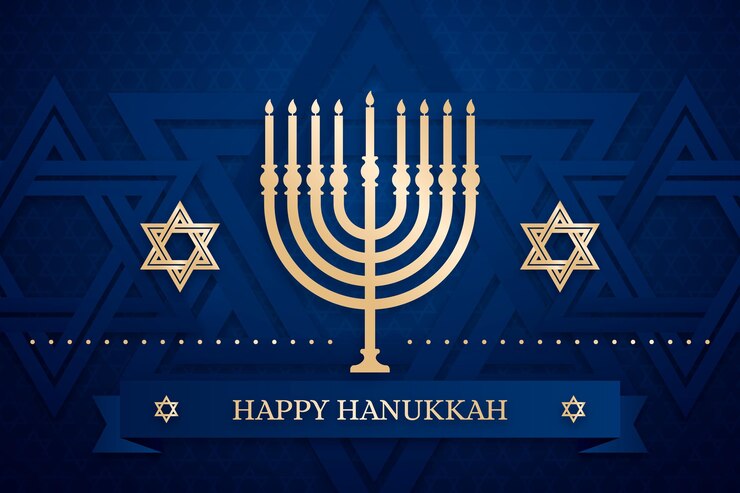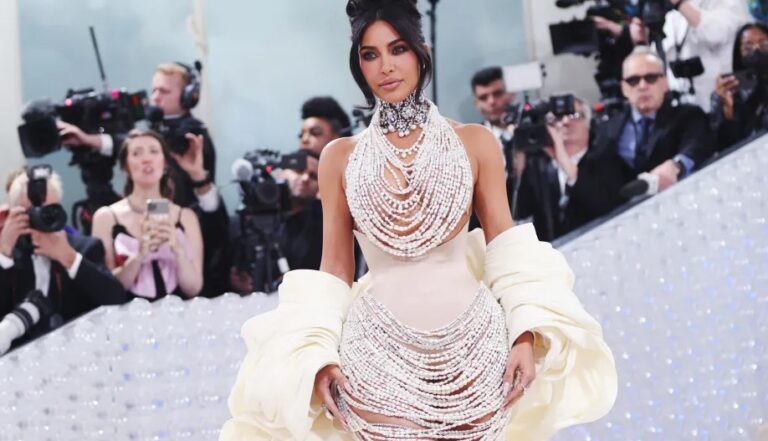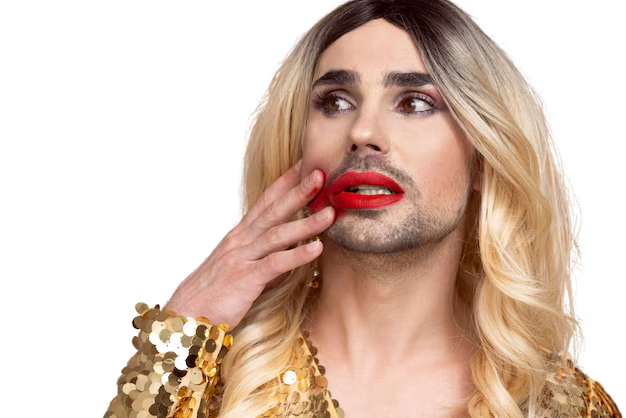Hanukkah: A Guide to the Festival of Lights
Welcome to the Festival of Lights! Hanukkah, also known as Chanukah, is a joyous and vibrant celebration that holds deep meaning for Jewish communities around the world. Whether you’re familiar with this holiday or just curious to learn more, this guide will demystify Hanukkah and shed light on its rich traditions and customs.
Get ready to discover the fascinating history behind Hanukkah, explore the rituals that make it unique, unveil its symbols and decorations, and even uncover some surprising global traditions. From lighting menorahs to playing dreidel games, from savoring traditional foods to exchanging gifts – there’s so much more to Hanukkah than meets the eye!
So join us on this enlightening journey as we delve into the origins of Hanukkah, immerse ourselves in its festive celebrations, understand its modern-day significance, all while bringing people together through interfaith relationships.
Whether you’re Jewish or not, get ready to ignite your curiosity and embrace the spirit of Hanukkah – a festival that embodies hope, resilience, and unity. Let’s unravel the mysteries of this radiant festival together!
What is Hanukkah?
As the winter season approaches, you may start hearing more about Hanukkah. But what exactly is Hanukkah? Well, let’s demystify this beloved Jewish holiday.
Hanukkah, also known as the Festival of Lights, is an eight-day celebration that usually falls in December. It commemorates the rededication of the Second Temple in Jerusalem and the miracle of a small amount of oil lasting for eight days. This miracle holds great significance for Jewish people around the world.
During Hanukkah, families gather to light the menorah candles each night and place it in a prominent spot in their homes. The lighting ceremony represents not only historical events but also serves as a symbol of hope and faith for future generations. Additionally, delicious traditional foods like latkes (potato pancakes) and sufganiyot (jelly-filled doughnuts) are enjoyed during this festive time.So now you have some insight into what Hanukkah is all about! Stay tuned as we delve deeper into its fascinating history and explore how it is celebrated worldwide.
Significance of Hanukkah
Hanukkah holds great significance for the Jewish community around the world. This eight-day festival commemorates a historical event that symbolizes resilience, faith, and the triumph of light over darkness. It is a time when families come together to celebrate their heritage and pass on traditions to future generations.
The significance of Hanukkah lies in its story of perseverance against oppression. It serves as a reminder of the Maccabean Revolt, where a small group of Jewish fighters fought against the powerful Greek army and reclaimed control over Jerusalem’s holy temple. The miracle that occurred during this time, with one day’s worth of oil lasting for eight days, further highlights the theme of hope and divine intervention in difficult times. Hanukkah reminds us to stand up for our beliefs, even when faced with adversity, and to never lose faith in miracles both big and small.
History of Hanukkah
The history of Hanukkah is a story filled with perseverance, bravery, and miracles. It all begins with the origins of this beloved Jewish holiday. Dating back over 2,000 years ago in ancient Israel, Hanukkah commemorates the rededication of the Second Temple in Jerusalem.
During this time, a group known as the Maccabees revolted against their oppressors and emerged victorious after years of struggle. The Maccabean Revolt symbolizes the resilience and determination of the Jewish people to preserve their faith and traditions. But it was not just military might that played a role in their victory; it was also a miraculous event that forever changed the significance of Hanukkah.
Origins of Hanukkah
The origins of Hanukkah date back over 2,000 years to a time when the Jewish people were under the rule of the Seleucid Empire. At this point in history, King Antiochus IV attempted to suppress Judaism and impose Hellenistic practices upon the Jewish population.
In response, a group known as the Maccabees rose up and successfully revolted against their oppressors. This victory led to the rededication of Jerusalem’s holy Temple, which had been desecrated by foreign forces. The story goes that there was only enough oil left in the temple for one day, but miraculously it burned for eight days until more could be obtained. And so began the tradition of lighting candles on each night of Hanukkah to commemorate this miracle.
The Maccabean Revolt
The Maccabean Revolt was a pivotal event in the history of Hanukkah. It all began with the oppressive rule of the Seleucid King Antiochus IV, who sought to erase Jewish traditions and force Hellenization upon the Jewish people. However, a group known as the Maccabees rose up against this tyranny, fighting for their religious freedom and cultural identity.
Led by Judah Maccabee and his brothers, this determined band of rebels waged a guerrilla war against the mighty Seleucid army. Despite being greatly outnumbered and outmatched, they displayed immense bravery and resilience. Their unwavering spirit inspired others to join their cause, resulting in a significant uprising that ultimately led to victory.
The Maccabean Revolt is an extraordinary tale of courage and determination in the face of oppression. It serves as a reminder that even against seemingly insurmountable odds, individuals have the power to stand up for what they believe in. The legacy of this revolt continues to inspire generations today as we celebrate Hanukkah’s triumph over adversity.
The Role of the Hanukkah Miracle
The Hanukkah miracle holds a special place in the hearts of those who celebrate this joyful Jewish holiday. It is a reminder of the resilience and determination of the Maccabees, who fought against religious persecution to reclaim their temple and restore it to its former glory.
When the Maccabees rededicated the Holy Temple in Jerusalem after their victory, they found only enough oil to light the menorah for one day. Miraculously, that small amount of oil lasted for eight days until more could be obtained. This miraculous event became known as the Hanukkah miracle and is commemorated by lighting candles on the menorah for eight nights.
To many, this miracle symbolizes hope and faith even in times of darkness. It serves as a powerful reminder that perseverance can lead to great things. The Hanukkah miracle continues to inspire people around the world during this festive season, reminding us all of our capacity for strength and overcoming adversity.
Celebrating Hanukkah
Celebrating Hanukkah is a joyful and festive time for Jewish communities around the world. One of the central traditions of this eight-day holiday is the lighting of the menorah, a nine-branched candelabrum. Each night, an additional candle is lit, symbolizing the miracle when a small amount of oil miraculously burned for eight days in ancient times.
Another beloved tradition during Hanukkah is playing the dreidel game. The dreidel is a four-sided spinning top with Hebrew letters on each side. Players take turns spinning it and depending on which letter it lands on, they win or lose gelt (chocolate coins). This game adds an element of excitement to the celebration and brings families together for some friendly competition. Additionally, traditional foods like latkes (potato pancakes) and sufganiyot (jelly-filled donuts) are enjoyed during Hanukkah, adding delicious flavors to the festivities.
Lighting the Menorah
Lighting the Menorah is a cherished tradition during Hanukkah. The menorah, also known as a hanukkiah, is a multi-branched candelabrum that holds nine candles. Each night of the festival, one additional candle is lit until all eight candles are glowing brightly. The ninth candle, called the shamash or “helper,” is used to light the others.
As darkness falls, families gather around their beautifully adorned menorahs and recite blessings before kindling the flames. It’s a beautiful sight to see as each candle symbolizes hope and triumph over adversity. The warm glow of the candles fills homes with joy and reminds us of the miraculous events that took place centuries ago. Lighting the menorah brings people together in celebration and serves as a reminder to spread light in our own lives and communities.
The Dreidel Game
The Dreidel Game is a beloved Hanukkah tradition that brings joy and excitement to both children and adults. This simple spinning top, known as a dreidel, holds ancient significance and adds an element of fun to the Festival of Lights.
To play the game, each player starts with an equal number of game tokens, usually chocolate coins called gelt. The players take turns spinning the dreidel and depending on which side it lands on (nun, gimel, hey, or shin), they either win or lose some of their tokens. It’s a game of chance that keeps everyone eagerly anticipating their next spin! So gather your family and friends around the table for some friendly competition during Hanukkah festivities!
Traditional Hanukkah Foods
Traditional Hanukkah Foods
Hanukkah is not only a festival of lights but also a time to indulge in delicious traditional foods. One of the most iconic dishes is latkes, crispy potato pancakes that are fried to perfection. These golden treats are usually served with sour cream or applesauce. Adding a delightful twist to their flavor.
Another beloved Hanukkah food is sufganiyot, which are jelly-filled donuts. These sweet treats symbolize the miracle of the oil and are often enjoyed throughout. The eight days of celebration. The doughnuts are deep-fried until they become fluffy and golden brown. Then filled with various flavors like raspberry or chocolate before being dusted with powdered sugar. It’s hard to resist these mouthwatering delights during this festive season!
Symbols and Decorations
Symbols and decorations play a significant role in the celebration of Hanukkah. One of the most iconic symbols is the Menorah, a nine-branched candelabrum used to commemorate the miracle of the oil lasting for eight days. Each night during Hanukkah, one additional candle is lit until all eight candles are aglow, along with the central Shamash (helper) candle.
Another beloved symbol is the Dreidel, a four-sided spinning top with Hebrew letters carved on each side. The game played with it adds an element of excitement and fun to Hanukkah festivities. Traditional Jewish foods such as latkes (potato pancakes), sufganiyot (jelly-filled doughnuts), and rugelach (sweet pastries) are also integral components of celebrating this joyous holiday. These symbols and decorations contribute to creating a festive atmosphere that brings families and communities together during this special time of year.
The Menorah
The Menorah, a symbol of the Hanukkah festival, holds great significance in Jewish tradition. This iconic seven-branched candelabrum is illuminated during the eight nights of Hanukkah. representing the miracle that occurred in ancient times. Each night, an additional candle is lit using the center “shamash” candle to commemorate and celebrate this historic event.
The Menorah serves as a reminder of the perseverance and faith demonstrated by the Maccabees who reclaimed their holy temple from oppressors. As darkness enveloped their land, they kindled a single oil lamp that miraculously burned for eight days – enough time to obtain more sacred oil. Today, Jews around the world continue to light their own Menorahs as a symbolic gesture of hope and resilience passed down through generations.
The Dreidel
The Dreidel, a beloved symbol of Hanukkah, is a spinning top with Hebrew letters on its sides. It holds a special place in the hearts of children and adults alike during this festive season. The game played with the dreidel involves spinning it and following the instructions based on which letter lands face up: “Nun” means nothing happens, “Gimel” means you win everything in the pot, “Hey” means you win half of what’s in the pot, and “Shin” means you have to add to the pot. It’s a delightful activity that brings laughter and excitement to Hanukkah celebrations.
Decorated beautifully with vibrant colors and intricate designs. Dreidels are often made from various materials such as wood or plastic. The four Hebrew letters – Nun, Gimel, Hey, Shin – hold deep symbolic meaning related to the story of Hanukkah. As families gather around to play this age-old game during their candle-lighting ceremonies or at parties with friends, they create lasting memories while embracing one of Judaism’s most cherished traditions
Hanukkah Gelt
The origin of this delightful tradition can be traced back to Eastern Europe in the 17th century. During Hanukkah, Jewish families would give their children small amounts of money as a way to celebrate the holiday and teach them about charity. Over time, these monetary gifts were replaced with chocolate coins wrapped in gold foil. Hence the name “Gelt,” which means “money” in Yiddish. Today, Hanukkah Gelt remains a cherished part of the holiday festivities for both young and old alike.
In modern times, giving Hanukkah Gelt has taken on new meaning beyond its original purpose. It has become a way for families to come together and share joy during this festive season. The act of exchanging these golden chocolates not only brings smiles to faces but also serves as a reminder of our shared history and traditions. So next time you unwrap one of those delectable chocolate coins during Hanukkah, remember that it’s more than just candy – it’s a sweet connection between past and present!
Hanukkah Traditions Around the World
Hanukkah, also known as the Festival of Lights, is celebrated not only in Jewish communities . Around the world but also by many people who appreciate its message of hope and resilience. While certain traditions remain consistent across different countries. There are also unique customs that reflect the diverse cultures where Hanukkah is observed.
In Israel, Hanukkah holds a special significance as it commemorates the Maccabean revolt and the rededication of the Second Temple in Jerusalem. The celebrations include lighting menorahs in public spaces such as parks and squares, with vibrant parades filling the streets. Israelis indulge in traditional foods like sufganiyot (jelly-filled donuts) and latkes (potato pancakes), adding to the festive spirit.
In other parts of the world, particularly in countries with significant Jewish populations like the United States, Hanukkah has become more mainstream. Many households incorporate customs such as lighting their own menorahs at home while exchanging gifts each night. The dreidel game remains popular among children, providing entertainment during this joyous time. In various countries around Europe and South America, local traditions blend with Hanukkah rituals to create a unique cultural tapestry.
These diverse expressions of Hanukkah illustrate how this festival continues to evolve while preserving its core meaning for Jews worldwide. Whether it’s through shared meals or community gatherings illuminated by candlelight, Hanukkah brings people together to celebrate miracles both ancient and modern
Hanukkah Celebrations in Israel
In addition to lighting the menorah, Israelis also enjoy indulging in traditional Hanukkah foods like sufganiyot (jelly-filled donuts) and latkes (potato pancakes). These delicious treats are fried in oil, symbolizing the miracle of Hanukkah. When a small amount of oil miraculously lasted for eight days. Families come together to share these special meals and exchange gifts during this joyous time. The spirit of unity and celebration fills every corner of Israel during Hanukkah festivities.
Hanukkah Customs in the United States
In the United States, Hanukkah customs are cherished and celebrated by, Jewish communities across the country. Families gather each evening to light the menorah, recite prayers, and sing traditional songs. The lighting of the menorah holds deep significance, symbolizing the miracle of a small amount of oil that lasted for eight days in ancient times. It is a beautiful tradition that brings warmth and light into homes during this festive season.
Another beloved custom during Hanukkah is playing the dreidel game. Children (and adults too!) spin a four-sided top with Hebrew letters on each side: nun, gimmel, hey, and shin. Depending on which letter lands facing up after spinning, players either take or give gelt (chocolate coins) from a central pot. The game is filled with laughter and excitement as. Everyone tries their luck at winning some tasty treats! These traditions not only connect Jewish individuals to their heritage but also foster a sense of unity within families and communities across America.
Unique Hanukkah Traditions in Different Countries
Hanukkah, also known as the Festival of Lights, is celebrated by Jewish communities around the world. While many traditions associated with Hanukkah are universal, there are also unique customs that vary from country to country.
In Israel Hanukkah is a major holiday and is celebrated with great enthusiasm. One unique tradition is the lighting of a large public menorah in different cities each night of the festival. This brings communities together and allows everyone to participate in spreading the light of Hanukkah. Additionally, it’s common for families to exchange small gifts or tokens during this time.
In countries like the United States, one popular tradition involves creating elaborate displays of illuminated decorations on front lawns or windowsills. These displays often include lit-up menorahs along with other symbols associated with Hanukkah such as dreidels and Stars of David. Another unique custom in some countries involves playing special versions of the dreidel game that incorporate local cultural elements. These variations add a fun twist to an already beloved tradition.
Hanukkah in Modern Times
Hanukkah in Modern Times has evolved into a cherished holiday, celebrated not only by Jewish communities but also by people of diverse backgrounds around the world. One significant aspect of modern Hanukkah is the tradition of gift-giving. Just like Christmas, families exchange presents during the eight nights of Hanukkah. This practice adds an element of excitement and joy to the festival, creating lasting memories for children and adults alike.
Another important aspect is how Hanukkah fosters interfaith relationships. In today’s multi-cultural society, many non-Jewish individuals join their Jewish friends or neighbors in celebrating this Festival of Lights. By participating in lighting the menorah, playing dreidel games, and enjoying traditional foods together, people from different religious backgrounds come together to appreciate each other’s traditions and create bonds based on shared values.
Hanukkah in modern times continues to hold deep significance for Jews worldwide while also promoting cultural understanding across communities.
Hanukkah and Gift-giving
Gift giving is a cherished tradition during Hanukkah, adding an extra layer of joy to the festival. While not originally part of the holiday, the practice of exchanging gifts has become increasingly popular in modern times. It’s a wonderful opportunity for families and friends to show their love and appreciation for one another.
The act of giving gifts during Hanukkah can be seen as a way to commemorate. The miracles that occurred during this time. Just as the oil in the menorah lasted for eight days instead of one, gift-giving symbolizes abundance and gratitude. Many families exchange presents each night of Hanukkah, with children eagerly anticipating what surprises await them each evening. Whether it’s small tokens or more significant gifts, the gesture embodies the spirit of generosity and celebration that defines this festive season.
Hanukkah and Interfaith Relationships
Hanukkah, also known as the Festival of Lights, is a joyous celebration that holds significance not just for Jewish individuals but also for those in interfaith relationships. This holiday can serve as an opportunity to foster understanding and strengthen bonds between people from different religious backgrounds.
In interfaith relationships, Hanukkah can be a time for learning and embracing each other’s traditions. It allows couples or families to come together and share in the lighting of the menorah, playing dreidel games, and enjoying traditional Hanukkah foods. By participating in these activities, partners from different faiths can gain a deeper appreciation for their loved one’s heritage and create new traditions that honor both cultures.
The spirit of Hanukkah encourages unity and tolerance among diverse communities. It provides a chance to celebrate similarities while respecting differences. Embracing interfaith relationships during this festival not only promotes love within families but also fosters acceptance within society as a whole. So let the lights of Hanukkah illuminate hearts with compassion and empathy, bringing people closer together regardless of their individual beliefs.
Hanukkah’s Impact on Jewish Identity
Hanukkah, the Festival of Lights, holds a special place in the hearts and minds of Jewish people around the world. This annual celebration not only commemorates historical events but also plays a significant role in shaping Jewish identity.
For many Jews, Hanukkah serves as a powerful reminder of their resilience and determination to preserve their faith and culture. The story of the Maccabees’ victory over oppression resonates deeply within the community. Inspiring individuals to embrace their heritage with pride. Through lighting menorahs, playing dreidel games, and enjoying traditional foods like latkes and sufganiyot. Jews reinforce their connection to generations past while forging bonds with future generations.
The impact of Hanukkah extends beyond religious observance; it fosters a sense of unity among Jews worldwide. As families gather to celebrate this joyous occasion together, they create lasting memories. That strengthen familial ties and reinforce shared values. Additionally, public displays of Hanukkah symbols serve as a visible representation of Jewish presence within communities, promoting awareness and understanding.
Conclusion
As we wrap up this journey through the Festival of Lights, it becomes clear that Hanukkah is a vibrant and cherished celebration for Jewish communities worldwide. From its historical origins to modern-day traditions, this holiday holds deep meaning and significance. Whether lighting the menorah, playing dreidel games, or indulging in delicious traditional foods. Each aspect of Hanukkah contributes to a sense of unity and joy.
Hanukkah’s global reach ensures that no matter where you are in the world. There are unique customs and celebrations to discover. From Israel’s grand festivities to the diverse practices found in different countries, Hanukkah brings people together across cultures. Its impact extends beyond religious boundaries as well, fostering interfaith relationships and strengthening Jewish identity.
So as we bid farewell to our exploration of Hanukkah. Let us carry with us an appreciation for the festival’s rich history and enduring traditions. May the lights of the menorah continue to symbolize hope and resilience for generations to come!
FAQs
1. How long does Hanukkah last?
Hanukkah lasts for eight nights and days. The dates vary each year according to the Hebrew calendar, usually falling in late November or December.
2. What is the significance of lighting the menorah?
The lighting of the menorah holds great symbolism in celebrating Hanukkah. Each night, an additional candle is lit on the menorah to commemorate the miracle. that occurred in the Temple when a small amount of oil lasted for eight days.
3. Why do people play with dreidels during Hanukkah?
The dreidel game has been a beloved tradition during Hanukkah for centuries. It originated as a way for Jewish children to study. Torah secretly during times of persecution but has evolved into a fun activity enjoyed by all ages.
4. What are traditional foods eaten during Hanukkah?
Latkes (potato pancakes) and sufganiyot (jelly-filled doughnuts) are among the most popular dishes consumed during Hanukkah. These fried treats symbolize the miracle of oil and add joy to festive gatherings.
5. Are there any specific customs associated with celebrating Hanukkah in different countries?
Yes! While traditions may vary from country to country, one common theme remains – spreading light and joy amidst darkness. Through acts such as giving gifts, engaging in charitable deeds, and participating in community celebrations.







